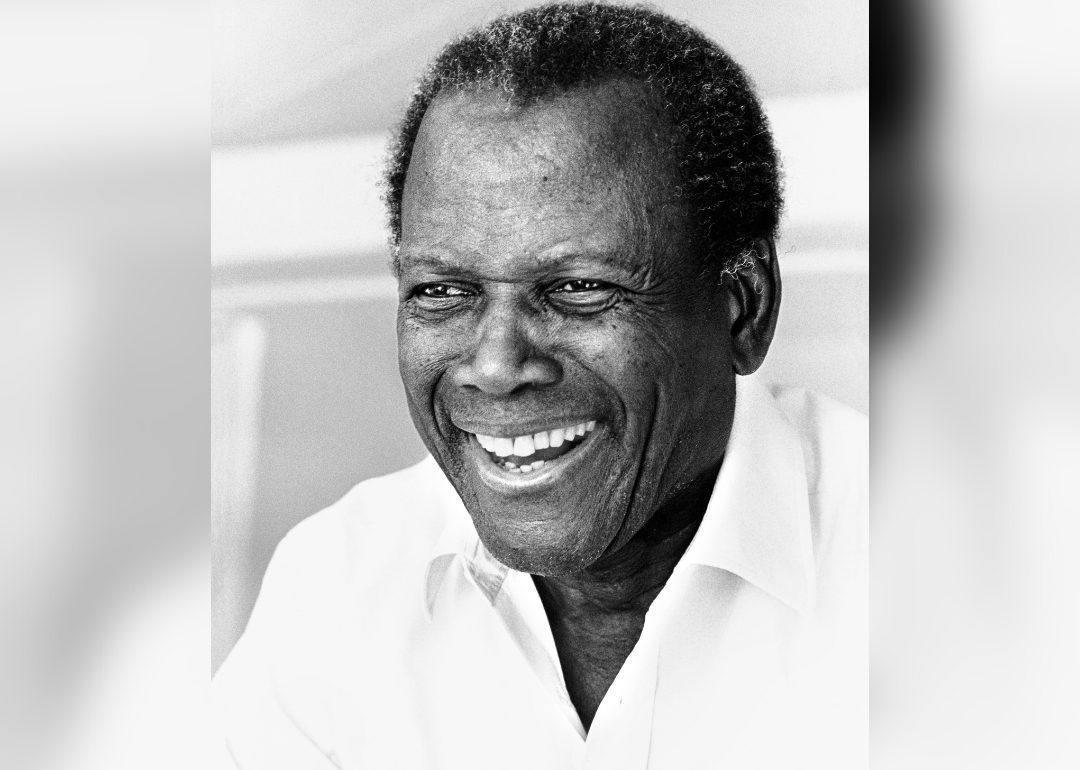United Artists // Getty Images It wasn’t long ago in American history when signs hung above public restrooms, water fountains, and restaurants proclaiming “Whites Only.” The Jim Crow era of America showed us that while all men were created equal, all people were not treated as such. During a time rampant with racial bias, violence, and political unrest, it is all the more impressive that an iconic figure such as Sidney Poitier was able to emerge as a leading star in Hollywood. Especially considering that, during the time of his initial stardom, many of the laws in place across the country would have forced Poitier into segregated sections of the theater to watch the very films in which he starred. Throughout his life and career, Poitier made himself a force to be reckoned with onscreen. Yet it was the equally powerful impact he made offscreen that has continued to earn Poitier such high esteem far beyond the scope of the roles he played. From his first film inspiring a political movement to his time as an activist and a Bahamian ambassador, there was no limit to what Poitier could accomplish in his 94 years of life. For that reason, Stacker compiled a list of 25 things about Sidney Poitier’s life you may not know, drawing from news accounts, biographies, magazine interviews, and movie databases. We reviewed all facets of Poitier’s remarkable life and career to honor the award-winning actor, activist, and trailblazer–scroll through for an in-depth look at his legacy. A dual citizen of the Bahamas Acey Harper // Getty Images Sidney L. Poitier was born two months premature on Feb. 20, 1927, while his family was in Miami. Originally from Cat Island, one of the least-inhabited islands of the Bahamas, his family had made the trip by boat to sell tomatoes from their farm. After spending time in the U.S. recovering from complications of early childbirth, Poitier and his family returned to the Bahamas, where he spent most of his formative years. Discovered a love of film in Nassau Bettmann Archive // Getty Images Poitier grew up on Cat Island, where he spent most of his time surrounded by nature. It wasn’t until his family moved to Nassau, the capital of the islands, when he was 10 years old that he had his first real exposure to the kind of performances he would later fall in love with–film and theater. From Nassau to Miami Bettmann // Getty Images The move to Nassau exposed Poitier to various art and culture he had never seen. Despite this, his parents feared his lack of education would cause him to slide into delinquency–especially after one of his closest friends was sent away to reform school. With one of his older brothers already residing in the States, 15-year-old Poitier followed behind him and ended up back in his birthplace of Miami. It was in Miami, however, where he encountered a new kind of trouble Silver Screen Collection // Getty Images Though Poitier didn’t grow up with a lot of money as a child, he grew up with a family who owned their land in a place that wasn’t constantly tormented by white supremacy. It wasn’t until he made his move to the United States that Poitier discovered the kind of trouble he could get into just for existing. While in Florida, Poitier worked as a delivery boy, during which–he remarked later in life–he encountered constant acts of racism. He was a victim of police harassment and brutality as a teenager John Springer Collection/CORBIS/Corbis via Getty Images After spending time in Miami and experiencing sanctioned indignities of segregation and racism–including an encounter with the Ku Klux Klan–Poitier decided to make his way up north to New York City. In Aram Goudsouzian’s book “Sidney Poitier: Man, Actor, Icon,” there’s a moment wherein Poitier recounts five white police officers threatening his life and stalking him home for 35 blocks before finally leaving him alone. The incident solidified his decision to flee the South. Poitier was unhoused and jailed for vagrancy Bettmann // Getty Images While his move to New York City was one of necessity, Poitier was in no way prepared for such a dramatic change in surroundings and climate. With only a few dollars in his pocket, no prospects, and the brutal winter of the northeast, Poitier sought shelter by any means that he could–sleeping on rooftops and park benches if it came to it. At one point, he even sought temporary shelter in an orphanage when the opportunity presented itself. Due to the instability of his conditions, he was jailed for vagrancy at different points in his early life. Lied about his age to join the Army Archive Photos // Getty Images In the few short years Poitier had been in the States, he had no shortage of run-ins with the law. After being arrested for vagrancy and overwhelmed by the cold weather, Poitier lied about his age and enlisted in the United States Army at 16. Worked with psychiatric patients in a veterans hospital Michael Ochs Archives // Getty Images After passing his enlistment requirements, Poitier was assigned to a veterans hospital on Long Island. He, along with 150 other Black recruits, was assigned to the psychiatric ward and tasked with working with patients returning from war and suffering from “shell shock.” The treatment was nearly as barbaric as the cause of the condition. Poitier would later recall, “We would in time become no more than jailers.” Faked a mental illness to get out of the Army Michael Ochs Archives // Getty Images While working at a veterans hospital, the atrocities Poitier witnessed and was forced to participate in became too much for him to bear. To get a discharge from the Army, rather than the dangerous and illegal risk of going AWOL, Poitier faked a mental disorder. His accent impacted his acting career Hulton Archive // Getty Images With no education, a discharge from the Army, and few options, Poitier decided to answer an ad for the American Negro Theater. Poitier tanked his first audition because of his Bahamian accent. After the poor audition, he dedicated hours to listening to radio broadcasters to learn how to mimic their accent and eliminate his own. He later returned for an audition, landing his first role in 1946 as the understudy to Harry Belafonte in “Days of Our Youth.” He and Belafonte would go on to be lifelong friends. Poitier’s first leading role was controversial Getty Images Through the experiences of racism, discrimination, and white supremacy Poitier faced early in life, he was determined to make a career that led him away from being typecast or put into roles that would force him to portray Black people in a derogatory, dangerous, or stereotypical light. That belief was evident when he made his film debut in 1950’s “No Way Out.” The movie rendered a brutally honest depiction of the inherent racism embedded in the United States while refusing to portray a Black man in a stereotypical subservient role, an extreme rarity during a time when segregation was still the norm. The film was banned in parts of the U.S. and the Bahamas. It was the movie’s ban that inspired Bahamians to form a Citizens Committee to demand the film be allowed–and they won. The group later became the Progressive Liberal Party, which morphed into a majority party that eventually won independence from English colonial rule in 1973. First Black American nominated for an Academy Award FilmPublicityArchive/United Archives via Getty Images Poitier was born just two years after the first Academy Awards on May 16, 1929. Thirty years later, he became the first Black American to be nominated for the Best Actor Oscar for his role in 1958’s “The Defiant Ones,” a story about two members of a chain gang–one Black, one white–who escape after the truck transporting them crashes. It was one of Hollywood’s earliest attempts at addressing race relations and earned both Poitier and his co-star Tony Curtis accolades and awards. March on Washington Express/Archive Photos // Getty Images In 1963, America was at the height of the Civil Rights Movement. Dr. Martin Luther King Jr. was inspiring and influencing people across the country to take part in the bigger picture of desegregation, equality, and freedom for all. One of the major markers of this movement was the March on Washington, which had more than 260,000 people in attendance listening to King give his “I Have a Dream” speech. Among that crowd was Poitier, along with other celebrities like Harry Belafonte, Joseph Mankiewicz, Bob Dylan, and, believe it or not, a young Charlton Heston. First Black American to win Best Actor Academy Award Archive Photos // Getty Images Though Poitier hadn’t won the Best Actor Oscar for his role in “The Defiant Ones,” that all changed four years later when he took home the prize for his portrayal of Homer Smith in 1963’s “Lilies of the Field.” Despite his barrier-breaking performance, irresistible talent, and garnering two Best Actor nominations, when the camera panned to Poitier as he walked to the stage at the ceremony, it’s of interesting note that he was seated dozens of rows behind his peers. Despite Poitier’s Oscar win, many movie theaters remained segregated. Poitier, Harry Belafonte, the KKK and Freedom Summer Bettmann Archive // Getty Images Less than a few months after winning his first Academy Award, Poitier participated in Freedom Summer, a civil rights campaign built around registering as many Black voters as possible in Mississippi in 1964. During the campaign, it was well known that KKK members would harass volunteers working on the campaign. As such was evidenced by the story of the time Poitier and Harry Belafonte personally flew in a carrier bag full of money to assist with the cause. When the pair arrived, got off the plane, and got into a car meant to escort them to their destination, the car was met with a cohort of armed Klansman, and a chase ensued. They followed the duo until they made it to Greenwood, Mississippi. Starred in 3 of the highest-grossing movies of 1967
Sidney Poitier: The life story you may not know















